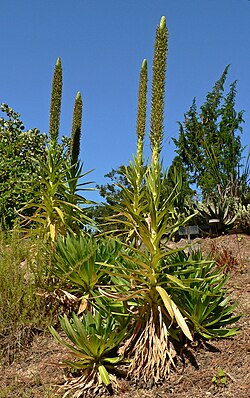| Lobelia aberdarica | |
|---|---|
 | |
| Scientific classification | |
| Kingdom: | Plantae |
| Clade: | Tracheophytes |
| Clade: | Angiosperms |
| Clade: | Eudicots |
| Clade: | Asterids |
| Order: | Asterales |
| Family: | Campanulaceae |
| Genus: | Lobelia |
| Species: | L. aberdarica |
| Binomial name | |
| Lobelia aberdarica | |
Lobelia aberdarica is a species of plant in the family Campanulaceae. It is restricted to the uplands of Kenya and Uganda (1860-3350m). It has been found in the forests of Cherangani hills, Kenya. [2] Its natural habitats are lower and upper montane and subalpine swamps and meadows. It has been brought into cultivation.
